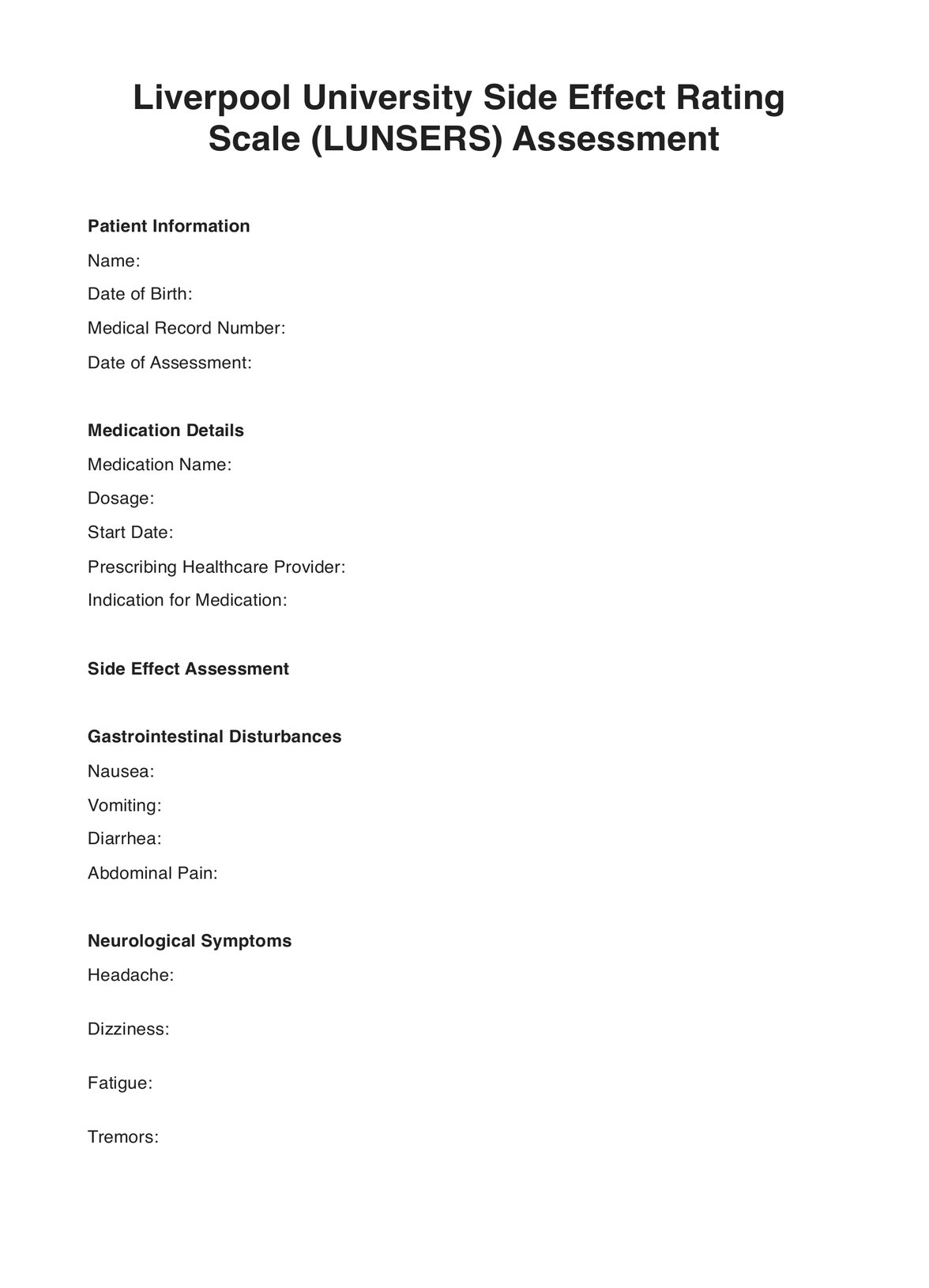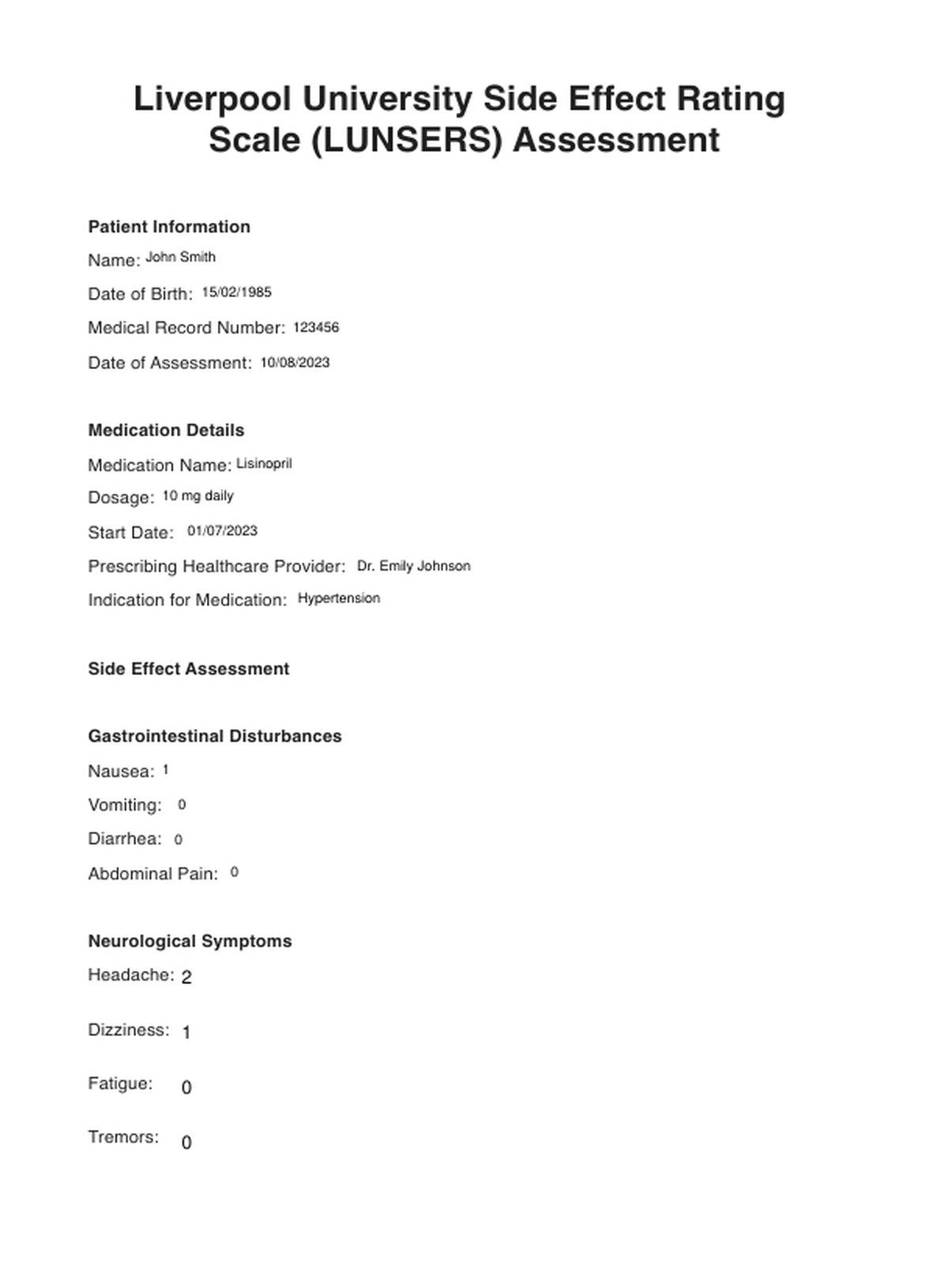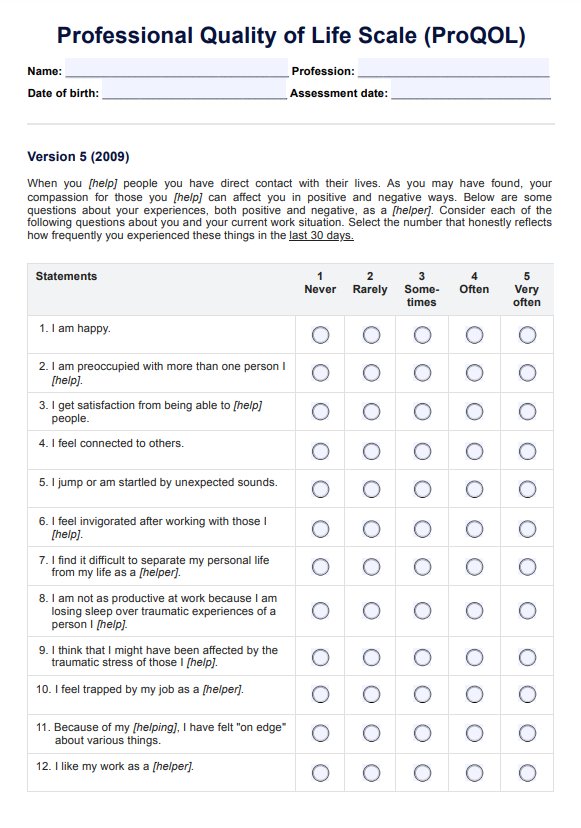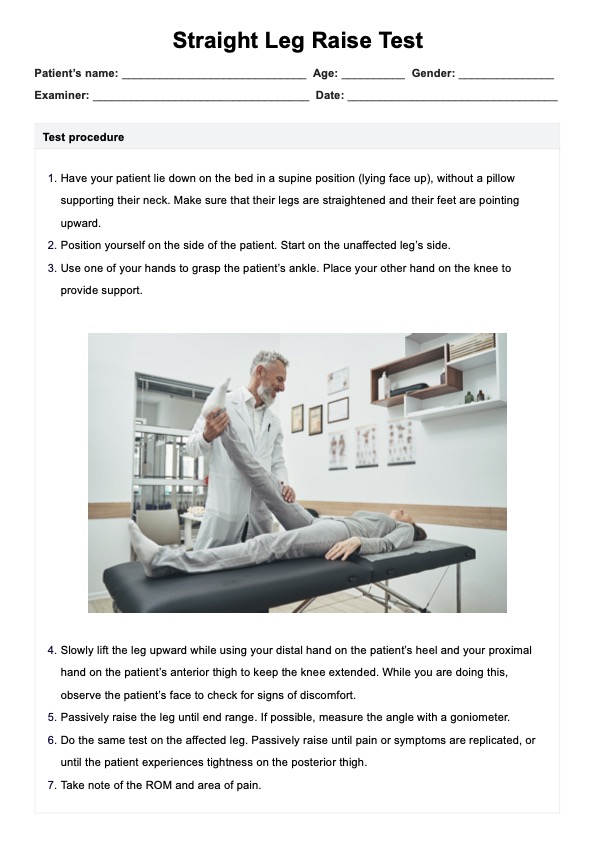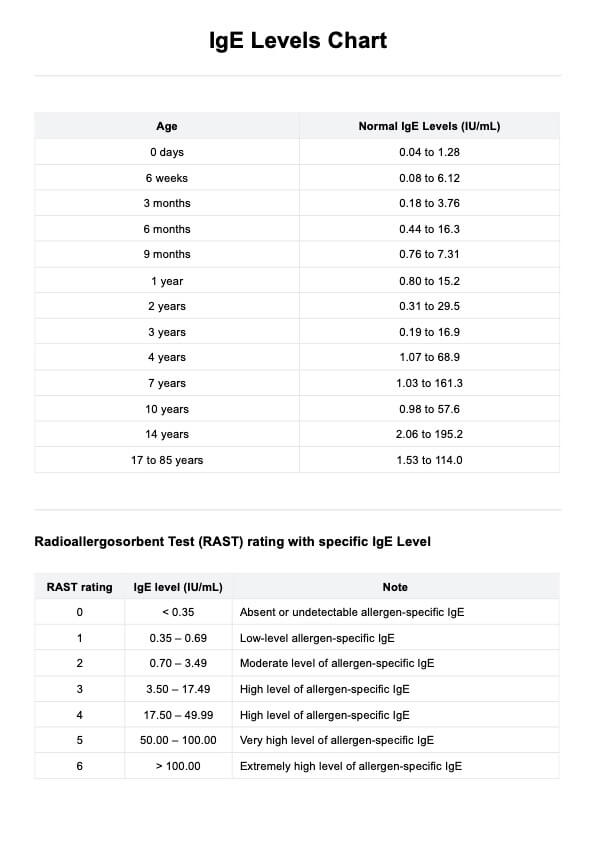Liverpool University Side Effect Rating Scale (LUNSERS)
Stay informed about potential medication side effects with Liverpool University Side Effect Rating Scale (LUNSERS) to assess and manage any adverse reactions.


What is the Liverpool University Side Effect Rating Scale (LUNSERS)?
The is a standardized tool designed to assess and monitor the side effects of medication in patients. Researchers at the University of Liverpool developed it to provide healthcare professionals with a structured and objective way to measure and quantify the adverse effects that patients might experience due to various medications.
LUNSERS operates as a comprehensive system that enables healthcare providers to evaluate the severity and impact of side effects systematically. The scale includes various categories and items covering potential side effects, such as gastrointestinal disturbances, neurological symptoms, skin reactions, etc. Each category is assigned a numerical score based on the severity of the observed side effect.
The scale's primary purpose is to enhance patient safety and care by enabling healthcare providers to promptly identify and address adverse drug reactions. By employing LUNSERS, healthcare professionals can ensure that any adverse effects of medication are accurately documented and effectively managed. This contributes to better-informed decision-making regarding a patient's treatment plan, potentially leading to adjustments in dosage or medication choice to minimize side effects.
In electronic health records (EHRs), LUNSERS can be seamlessly integrated through platforms like Carepatron. This integration facilitates the recording and tracking of patient side effects over time, allowing for a more comprehensive understanding of their medication-related experiences.
Overall, the Liverpool University Side Effect Rating Scale is a valuable tool for improving patient care and medication management by providing a structured approach to assessing and managing adverse drug reactions.
Liverpool University Side Effect Rating Scale (LUNSERS) Template
Liverpool University Side Effect Rating Scale (LUNSERS) Example
How to use the Liverpool University Side Effect Rating Scale (LUNSERS)
Here's a step-by-step guide on how to use the LUNSERS scale:
Familiarization
Begin by acquainting yourself with the LUNSERS scale and its components. Understand its various side effects, such as gastrointestinal, neurological, and dermatological.
Patient Interview
Engage in a comprehensive discussion with the patient. Inquire about any symptoms or discomfort they might be experiencing since starting the medication.
Scale Selection
Determine the relevant categories of side effects based on the patient's reported symptoms. Choose the appropriate sections of the LUNSERS scale to evaluate their condition.
Item Assessment
Within each selected category, carefully assess the patient's symptoms against the provided descriptors and severity levels in the LUNSERS template.
Scoring
Assign a numerical score to each identified side effect based on its severity. The scale typically ranges from 0 (no side effect) to 3 or 4 (severe side effect).
Total Score Calculation
Calculate the total score by summing up the individual scores across all assessed side effects.
Documentation
Record the scored side effects and their corresponding scores in the patient's electronic health record (EHR) or the chosen platform, such as Carepatron's electronic health records module.
Monitoring and Follow-Up
Regularly monitor the patient's progress and side effects over time. Adjust the treatment plan based on the recorded LUNSERS scores to manage adverse drug reactions effectively.
Communication
Share the LUNSERS assessment results with the patient and other relevant healthcare providers. This fosters transparent communication and allows for collaborative decision-making regarding the patient's medication regimen.
When would you use this Liverpool University Side Effect Rating Scale (LUNSERS)?
Healthcare professionals can effectively employ LUNSERS at specific times to ensure optimal patient outcomes and informed treatment decisions. Here are the key instances when LUNSERS can be most beneficial:
- Initial Medication Assessment: During the initial phases of a patient's treatment journey, healthcare providers can use LUNSERS to establish a baseline for side effect evaluation. This aids in identifying potential adverse reactions early on and guides the development of a tailored treatment plan.
- Ongoing Monitoring: LUNSERS is invaluable for continuously monitoring patients throughout their medication regimen. Regular assessments using the scale help track changes in side effect severity, enabling timely interventions and dosage adjustments if needed.
- Medication Changes: Whenever there's a change in medication or dosage, LUNSERS can be employed to assess if new side effects emerge or existing ones change in intensity. This informs healthcare providers about the medication's impact on the patient's well-being.
- Multidisciplinary Collaboration: LUNSERS fosters collaboration among healthcare professionals, allowing physicians, nurses, pharmacists, and other specialists to manage and address medication-related side effects collectively.
- Patient Empowerment: LUNSERS can engage patients in their care by discussing their side effect experiences, understanding their concerns, and making informed treatment adjustments.
- Clinical Research: Researchers can utilize LUNSERS in clinical trials and studies to standardize side effect assessment, ensuring accurate data collection for evaluating medication safety and efficacy.
- Geriatric and Pediatric Care: LUNSERS is suitable for assessing side effects in vulnerable populations such as geriatric or pediatric patients, where accurate monitoring is crucial due to unique physiological factors.
- Electronic Health Records Integration: With the integration of LUNSERS into electronic health records, healthcare providers can efficiently document and track patients' side effects experiences over time, enabling comprehensive patient care.
What are the benefits of using this Liverpool University Side Effect Rating Scale (LUNSERS)?
The Liverpool University Side Effect Rating Scale (LUNSERS) offers numerous advantages for healthcare professionals and patients. Backed by research, this assessment tool contributes to improved patient care and medication management. Here are the key benefits of using LUNSERS:
Standardized Assessment
LUNSERS provides a standardized framework for assessing and quantifying medication-related side effects. This consistency ensures accurate and comparable evaluations across different patients and healthcare settings.
Early Detection and Intervention
Using LUNSERS, healthcare providers can identify and address adverse drug reactions early, preventing potential complications and enabling timely interventions. Research suggests that early detection of side effects can lead to better patient outcomes and reduced healthcare costs.
Informed Treatment Decisions
LUNSERS empowers healthcare professionals to make informed treatment decisions based on objective assessments of side effects. This aids in tailoring medication regimens to individual patient needs, enhancing treatment efficacy and patient satisfaction.
Enhanced Patient Communication
Utilizing LUNSERS encourages open dialogue between healthcare providers and patients. Discussing the side effects of experiences using a standardized tool improves communication, fosters patient engagement, and helps manage patient expectations.
Research and Data Analysis
Researchers benefit from LUNSERS as it provides a reliable method for collecting and analyzing data related to medication side effects. This data contributes to a deeper understanding of medication safety and informs clinical research endeavors.
Improved Documentation
Integrating LUNSERS into electronic health records streamlines documentation and tracking of side effect occurrences over time. This enables comprehensive patient records and facilitates better continuity of care.
Utilizing the Liverpool University Side Effect Rating Scale (LUNSERS) has evidence-backed advantages that enhance patient safety, treatment decision-making, and overall healthcare quality. Its standardized approach ensures consistency and accuracy in assessing medication-related side effects, contributing to improved patient outcomes and more efficient healthcare delivery.
Commonly asked questions
The time to complete LUNSERS varies based on the number of side effects being assessed and the complexity of the patient's condition. Generally, it can take around 10 to 15 minutes to complete the assessment.
The LUNSERS scale provides numerical scores for each assessed side effect. Higher scores indicate more severe side effects. Healthcare professionals can analyze the total and individual scores to understand the overall impact of medication on the patient and make treatment decisions accordingly.
LUNSERS is used during various stages of patient care, including initial medication assessment, ongoing monitoring, medication changes, and multidisciplinary collaboration. It helps in identifying, assessing, and managing medication-related side effects effectively.
LUNSERS can be utilized by various healthcare professionals, including physicians, nurses, pharmacists, and researchers. It is adaptable across different specialties and care settings for assessing and managing medication side effects.


